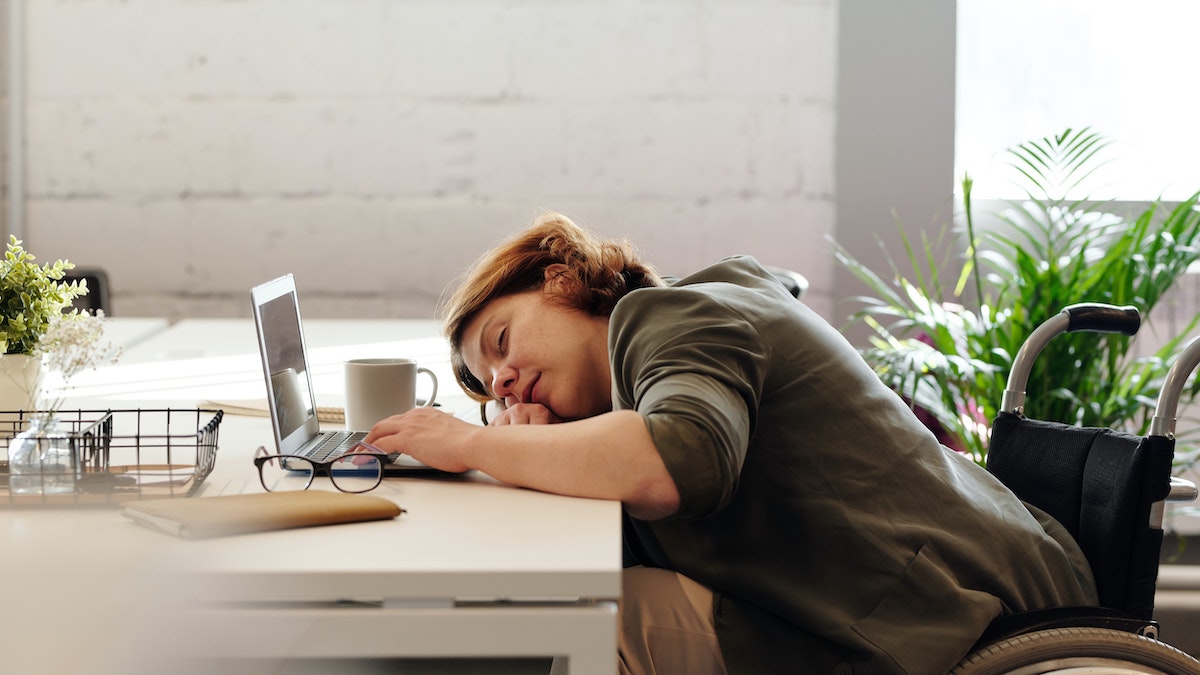Anyone who works remotely knows that Zoom fatigue is VERY real indeed. Learn why it happens to so many, and what you can do it combat it.

Without a doubt, one of the saving graces amidst COVID has been the fact that we have the technology to stay connected to one another virtually. We are able to both see and hear our loved ones and colleagues across the globe without having to take a single step outside of our living rooms. It’s amazing, but…
Zoom fatigue from virtual meetings is a VERY real thing.
…and if you thought you were the only one feeling this “Zoom fatigue,” you most definitely are not!
Here are four reasons why Zoom fatigue happens to so many of us:
Eye Contact: During in-person meetings, we typically will make far less eye contact than we’re expected to on Zoom, and this wears us out.
Seeing Yourself: We can’t help but be critical of ourselves, and having to constantly see ourselves on camera is tiring.
No Physical Movement: It’s easy to forget just how little we’re moving our bodies when we’re talking to a screen. Being sedentary generally makes us sluggish.
Lack of Body Language: When we’re with someone face-to-face, we both send and receive a ton of information through body language without even realizing it. On Zoom, we have to work so much harder to communicate and understand without body language to rely upon.
Your Solution
Below are five remedies I’ve found enormously helpful in protecting my own energy and practicing self-care during this newfound “Zoom culture.” I hope you’ll find them useful as well!
1) Figure out your “Zoom energy” times.
When our new reality first set in, I was agreeing to Zoom calls at any hour of any day until it finally hit me: I wouldn’t agree to get a coffee on any day of the week at any time of day or night, so why would I accept Zoom invites that way? Whenever it feels best to do your face-to-face virtual meetings – late mornings, early afternoons, or my personal favorite, “happy hour chats” at 5 or 6 each day, don’t be afraid to plan your Zooms in a way that protects your energy and time.
2) Set boundaries that take care of you.
Once you’ve figured out the parameters around Zoom that feel best to you (for example no video chats before noon each day or no video chats on Tuesdays or Thursdays), stick to it. Don’t be afraid to tell people about the boundaries you’ve set for yourself. Most likely they will be curious to hear about it and inspired to create their own 🙂 For more, check out Self Care for Entrepreneurs: Build a Business That Takes Care of YOU.
3) Ask for a phone call sometimes.
I’ve made a habit of asking everyone who signs up for an Ellanyze call whether they’d prefer video or phone, and do you know what I found? Almost half prefer to simply chat on the phone (!) – and understandably so. For myriad reasons, talking on the phone requires far less energy than getting on Zoom. I think you’ll find that when you ask to connect via phone, people will be receptive and understanding. They might even secretly be a little relieved as well.
4) Turn off “Self View.”
Did you know you can turn off Self View on Zoom so you can’t see yourself during your meeting? This has been a game-changer for me. I find that when I can’t see myself on screen, I’m able to better relax, be more fully present, and I also end up far less tired when the call is done. Let’s face it: it’s difficult not to look at ourselves when we can see our own “reflection” in view (it’s human nature). Turn off Self View and watch how it takes your online conversations to the next level. Here are instructions on how to turn off Self View.
5) Remember that it’s ok to say no.
I’m here to tell you (in case no one else is) that you don’t have to say yes to every single Zoom meeting, gathering, or party you’re invited to. It’s ok to bow out sometimes. A simple “I’ve been feeling overwhelmed with virtual meetings – can we touch base in a few weeks?” is all it takes.
What’s one step you can take this week with your Zoom practices to protect your energy and take better care of yourself?

